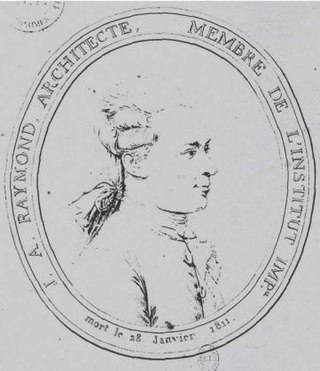Bertrand Jestaz, 2 February 1939 in Fontainebleau, is a French art historian, specialized in French and Italian Renaissance and in French classical art.
A student of the École Nationale des Chartes and the École du Louvre, he dedicated his archivist and palaeographer thesis to Jules Hardouin-Mansart (1962). After graduating from the École des chartes, he was appointed to the Département des objets d'art du musée du Louvre , then at the École française de Rome. As curator, he organized several exhibitions including (with Daniel Alcouffe and Colombe Samoyault-Verlet) Dix siècles de joaillerie française (Louvre, 1962), (with Michel Laclotte and Sylvie Béguin) L'École de Fontainebleau (Grand Palais, 1972–1973).
In 1980, he succeeded André Chastel at the Renaissance Art History chair at the École pratique des hautes études. Meanwhile, he was a professor at the Ecole du Louvre and at the École des chartes until 2003.
Jestaz was awarded the Prize XVIIe in 2009 for his biography of Jules Hardouin-Mansart.

Jules Hardouin-Mansart was a French Baroque architect and builder whose major work included the Place des Victoires (1684–1690); Place Vendôme (1690); the domed chapel of Les Invalides (1690), and the Grand Trianon of the Palace of Versailles. His monumental work was designed to glorify the reign of Louis XIV of France.

Jacques Lemercier was a French architect and engineer, one of the influential trio that included Louis Le Vau and François Mansart who formed the classicizing French Baroque manner, drawing from French traditions of the previous century and current Roman practice the fresh, essentially French synthesis associated with Cardinal Richelieu and Louis XIII.

French Baroque architecture, sometimes called French classicism, was a style of architecture during the reigns of Louis XIII (1610–43), Louis XIV (1643–1715) and Louis XV (1715–74). It was preceded by French Renaissance architecture and Mannerism and was followed in the second half of the 18th century by French Neoclassical architecture. The style was originally inspired by the Italian Baroque architecture style, but, particularly under Louis XIV, it gave greater emphasis to regularity, the colossal order of facades, and the use of colonnades and cupolas, to symbolize the power and grandeur of the King. Notable examples of the style include the Grand Trianon of the Palace of Versailles, and the dome of Les Invalides in Paris. In the final years of Louis XIV and the reign of Louis XV, the colossal orders gradually disappeared, the style became lighter and saw the introduction of wrought iron decoration in rocaille designs. The period also saw the introduction of monumental urban squares in Paris and other cities, notably Place Vendôme and the Place de la Concorde. The style profoundly influenced 18th-century secular architecture throughout Europe; the Palace of Versailles and the French formal garden were copied by other courts all over Europe.
The Bâtiments du Roi was a division of the Maison du Roi in France under the Ancien Régime. It was responsible for building works at the King's residences in and around Paris.
Jean Aubert was a French architect, the most successful of the Régence and designer of two of the most important buildings of the period: the stables of the Château de Chantilly and the Hôtel Biron in Paris. He also created innovative interior designs, the most notable, the separation of private and public spaces for the Palais Bourbon in Paris.

The Académie Royale d'Architecture was a French learned society founded in 1671. It had a leading role in influencing architectural theory and education, not only in France, but throughout Europe and the Americas from the late 17th century to the mid-20th.
Michel Laclotte was a French art historian and museum director, specialising in 14th and 15th century Italian and French painting.

Marcel Aubert was a French art historian.

François d'Orbay (1634–1697) was a French draughtsman and architect who worked closely with Louis Le Vau and Jules Hardouin Mansart.

Jean Marot was a French architect and engraver of architectural views. Little has survived of his own architectural work, but his engravings of the works of others, primarily those published in the volumes referred to as the Petit Marot and the Grand Marot (1686), were highly esteemed by his contemporaries and remain, despite numerous inaccuracies and distortions, among the most important sources concerning architecture in France up to the early part of the reign of Louis XIV.

Camille Enlart was a French archaeologist and art historian. His areas of special interest were the Middle Ages and photography.
The Société d'étude du XVIIe is a French learned society established in Paris in 1948 along the status of an association loi de 1901 in order to bring together specialists of this period and to develop studies on this century.

Alain Erlande-Brandenburg was a French art historian and honorary general curator for heritage, a specialist on Gothic and Romanesque art.
Laurence des Cars is a French general curator of heritage and art historian, since September 2021 Director of the Louvre Museum after having headed the Musée d'Orsay and Musée de l'Orangerie.

Jean Boisselier was a French archaeologist, ethnologist, and art historian. He was a specialist on Khmers and a researcher focused on Buddhist thought and iconography. As a member of the École française d'Extrême-Orient (EFEO), he was responsible for the restoration of Angkor.
Jean-Marie Pérouse de Montclos is a French architectural historian.

Jean-Arnaud Raymond was a French architect in the Palladian style.

Louis-Eugène-Georges Hautecœur was a French art historian and museum conservator.
Thierry Zéphir is a French research engineer at the Guimet Museum, and a specialist in Khmer art and the Indianized world.